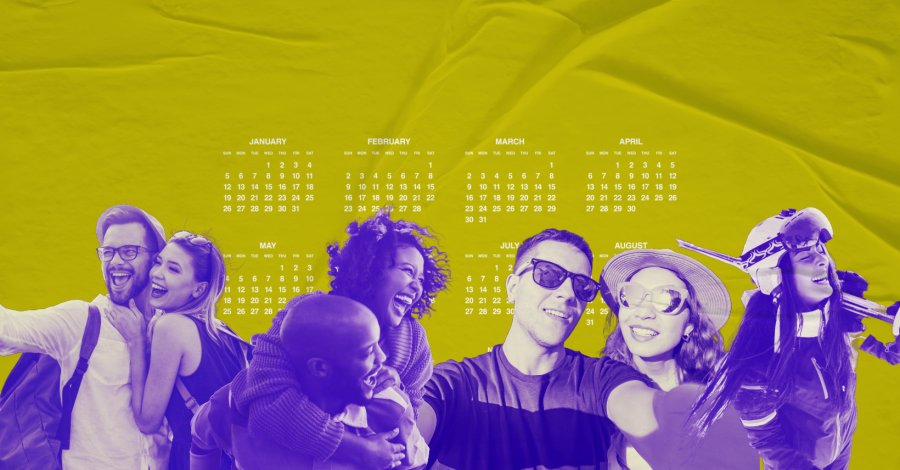Navigating the AI Era: How DMOs Can Thrive with Google’s AI Trip Planner
April 3, 2024
In an age where artificial intelligence is reshaping the travel landscape, Google’s announcement of a Generative AI Trip Planner has sparked a mix of excitement and concern among DMOs. This innovative tool, integrated directly into Google’s search ecosystem, promises to simplify trip planning for users by generating itineraries based on rich content. But does this spell the end for DMO websites? Far from it. Instead, it heralds a new era of opportunity and adaptation.
embracing the shift: content is king
The key to leveraging Google’s AI Trip Planner lies in understanding that AI is only as good as the data it processes. For DMOs, this means a pivotal shift in content strategy is necessary. Moving away from a supply-driven approach that lists attractions, restaurants, and accommodations, DMOs must adopt a demand-driven perspective. This involves curating content and itineraries tailored to specific user interests and queries, such as crafting the perfect weekend getaway for a family. Quality content that tells a compelling story will not only feed the AI with the information needed to create meaningful itineraries but also engage users in a way that listings alone cannot.
“Content creation is begging to be the focal point of the overall marketing strategy and consumers are desperately searching for the ‘experience’ aspect of the destination,” said Carie Jones, Senior Marketing Director.
Enhancing your SEO strategy ensures content is discoverable and interpretable by Google’s algorithms. This doesn’t just improve visibility — it aligns DMO offerings with user searches, ensuring that the information presented is both relevant and compelling. “It’s crucial to start curating unique itineraries built for basic traveler questions,” explained Media Director Hannah Chute. “Highlighting keyword phrases based on search demand such as distance (walking/driving) or topics (history/nature) or family-specific (kid/dog-friendly), helps AI to pull out those details for an itinerary of your destination when prompted.”
“Google currently adds sources to each destination it lists within its itineraries, and many of those sources are inspirational itinerary articles, listicles, and related blog posts,” added Associate MarTech Director Dylan Scacchetti. “DMOs should continue to invest in their unique content offerings while highlighting themselves as trusted resources for both humans and chatbots.”
The Challenge of Zero-Click Searches
While shifting content and focusing on SEO will allow DMOs to adapt to the changes in trip planning brought on by Google, there will still be challenges. A significant hurdle presented by Google’s AI Trip Planner is the shift towards zero-click searches, where users obtain all the information they need directly from Google’s interface. This could lead to a decline in direct traffic to DMO websites.
“To counteract this, DMOs must rethink how they measure the effectiveness of their marketing efforts, focusing on metrics like search volume for destination-related keywords as indicators of successful awareness campaigns,” said Media Director Wes Condray.
Furthermore, users who continue on to the DMO website will likely stay on it longer and be more likely to engage with partner websites.
“The more buttoned-up the DMO site’s content is from an SEO and user experience perspective, the longer users stay engaged — which leads to more click throughs to partner or member pages linked on the DMO site,” explained Heather Molina, Senior Director of Strategic Insights. “With Google prioritizing valuable content that aligns to user interests, this means the users who make it to the site are going to have even higher engagement and the clicks over to partner sites are going to have a higher intent to travel by the user.”
Paid Media in the AI Age
While the integration of paid ads into the AI trip planning experience remains uncertain, DMOs must stay ahead by ensuring their ads are as relevant and engaging as possible. Utilizing tools like Google Trends and the Keyword Planner will be essential for identifying emerging user interests and aligning campaigns accordingly. Additionally, paid media offers a unique opportunity to convey the emotional and experiential aspects of a destination, aspects that AI cannot replicate. Partnering with content creators to produce ads that resonate on a human level can significantly enhance a DMO’s paid media strategy.
the road ahead
As we stand on the brink of this new AI-driven era in travel, it’s clear that content creation will become the cornerstone of marketing strategies. DMOs need to focus on delivering the kind of engaging, emotionally resonant content that drives consumers to choose their destination. From enhancing SEO to leveraging paid media in innovative ways, there are numerous strategies DMOs can employ to not just survive but thrive in the age of AI.
Moreover, the importance of partnerships and collaborations has never been more pronounced. By collaborating with their partners and leveraging their combined strengths, DMOs can ensure their content stands out in an increasingly crowded digital landscape.
“DMOs and their partners should be encouraged to build the future together. This will enable both parties to develop and shape mutually beneficial content incentivized by a shared goal of reaching audiences and staying ahead of the competition,“ said Media Director Glenn Pena. “Simply put, DMO sites aren’t going anywhere, however there is an opportunity to reimagine existing media formats and develop new media experiences for partners to influence alongside DMOs.”
From rethinking content to reimagining partner collaboration, Google’s AI Trip Planner represents not an end but a new beginning for DMOs. By embracing change, focusing on quality content, and forging strong partnerships, DMOs can ensure their destinations remain at the forefront of travelers’ minds.



